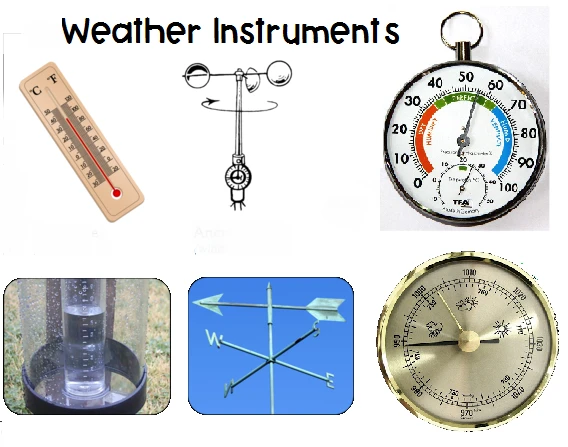
# Weather Instruments: Essential Tools for Accurate Forecasting
## Introduction to Weather Instruments
Weather instruments are crucial tools used by meteorologists and weather enthusiasts to measure atmospheric conditions. These devices provide accurate data that helps in predicting weather patterns, understanding climate changes, and ensuring public safety. From simple thermometers to advanced radar systems, weather instruments come in various forms, each serving a specific purpose.
## Common Types of Weather Instruments
### Thermometers
Thermometers are perhaps the most well-known weather instruments. They measure air temperature, which is fundamental for weather forecasting. Modern thermometers use digital sensors, but traditional mercury or alcohol-based thermometers are still in use.
### Barometers
Barometers measure atmospheric pressure, a key indicator of upcoming weather changes. A sudden drop in pressure often signals an approaching storm, while rising pressure usually indicates fair weather. Aneroid and mercury barometers are the two primary types.
### Hygrometers
Hygrometers measure humidity levels in the air. Understanding humidity is essential for predicting precipitation, fog, and even heat index calculations. Digital hygrometers are now widely used due to their accuracy and ease of use.
### Anemometers
Anemometers measure wind speed and direction. This information is vital for aviation, marine navigation, and predicting severe weather events like hurricanes and tornadoes. Cup, vane, and sonic anemometers are common variants.
### Rain Gauges
Rain gauges collect and measure precipitation over a set period. This data helps in assessing drought conditions, flood risks, and overall water resource management. Standard rain gauges use a graduated cylinder, while more advanced models employ tipping buckets or weighing mechanisms.
## Advanced Weather Instruments
### Weather Radars
Weather radars detect precipitation, its motion, and intensity. They are indispensable for tracking storms, tornadoes, and other severe weather phenomena. Doppler radar, in particular, provides detailed information about wind patterns within storms.
### Weather Satellites
Weather satellites orbit the Earth, providing a global perspective on weather systems. They capture images of cloud cover, monitor sea surface temperatures, and track hurricanes and typhoons. Geostationary and polar-orbiting satellites are the two main types.
### Weather Balloons
Weather balloons carry instruments called radiosondes into the upper atmosphere. These devices measure temperature, humidity, pressure, and wind at various altitudes. The data collected is crucial for creating accurate weather models and forecasts.
## Importance of Weather Instruments
Accurate weather forecasting relies heavily on the data provided by these instruments. Farmers use weather data to plan planting and harvesting, while airlines depend on it for safe flight operations. Emergency services also utilize weather forecasts to prepare for and respond to natural disasters.
Moreover, long-term data collected by weather instruments helps scientists study climate change patterns. This information is vital for developing strategies to mitigate the effects of global warming and protect our planet.
## Conclusion
Weather instruments are the backbone of meteorological science. From simple thermometers to sophisticated satellites, these tools provide the data needed to understand and predict weather patterns. As technology advances, these instruments continue to improve, offering even more precise and reliable forecasts. Whether for daily planning or long-term climate studies, weather instruments play an indispensable role in our lives.
Keyword: wether instruments
